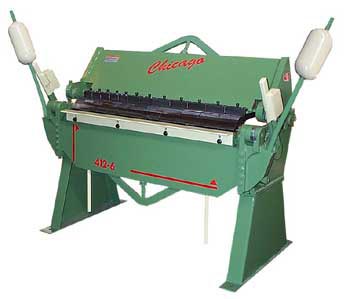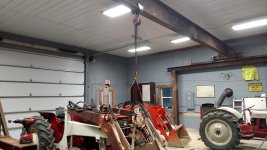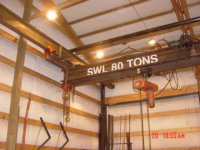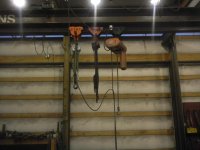SPYDERLK
Super Star Member
- Joined
- Feb 28, 2006
- Messages
- 12,530
- Location
- VA
- Tractor
- JD2010, Kubota3450,2550, Mahindra 7520 w FEL w Skid Steer QC w/Tilt Tatch, & BH, BX1500
The PE / engineer that helped me with my bridge crane, explained how beams fail to me like this. Think of the beam as a yard stick. You push down in the center of the yard stick, what does it do? It bows off to one side or the other, before buckling. The flanges of the beam keeps this from happening. For my 24-feet span he said the S-shape was going to be to tall, so he suggested I get a Wide Flange beam. Rip an S-shape beam, and skip weld it to the bottom of the Wide flange beam.
I have no idea how many beams I've added flat bar to the flanges to increase the capacity of the beam.
Yes, an I beam will fail much quicker when it is allowed to flex side to side or torsional, like the FEA posted by projectking note the beam buckles not at the joint rather in the center where it is allowed to flex. The addition of a horizontal truss along the top would make it much stronger.
Not unlike the truss on a sheet metal brake.

The beam will fail when it lays over a "diamond" at the top of the beam would keep it vertical and make it much stronger, while not inhibiting trolley movement below.
It is simple if you look at it simply, the wider the beam the less likely it is to deflect side to side. Take a yard stick and flex it by both ends it is strong vertically but will flop side to side with little pressure make it a "T" or "H" and the wider you make the horizontal sections, the stronger it gets in that direction.
Not really. ... You gave examples of triangulation to keep the beam from deflecting. -- While instilling rigidity in the assembly will increase the failure point it does not address the prime failure mode, and is only well suited to uses where dimensional stability is a must.Same thing I said in #55
,,,It is not the deflection that kills an I beam - it is the relative torsional instability of the open section structure [whether wide or not] under load. The slightest asymmetry in the section and it will start to twist as it deflects in response to the load. This even with static loading hanging straight down - a leading or trailing load is obviously worse. -- The edge localized stresses caused by the twist cause plastic deformation at the flange edges. The beam sustains damage to some of its metal. The most efficient and best way to prevent the twist is to split a round tube and weld it to form a closed section around/integral with the beam web. The huge torsional rigidity of the tube will stabilize the beam so that it doesnt twist. Consequently the stressed load members will remain optimally aligned and the beam will safely support much more weight and have greater fatigue life.
Last edited:





